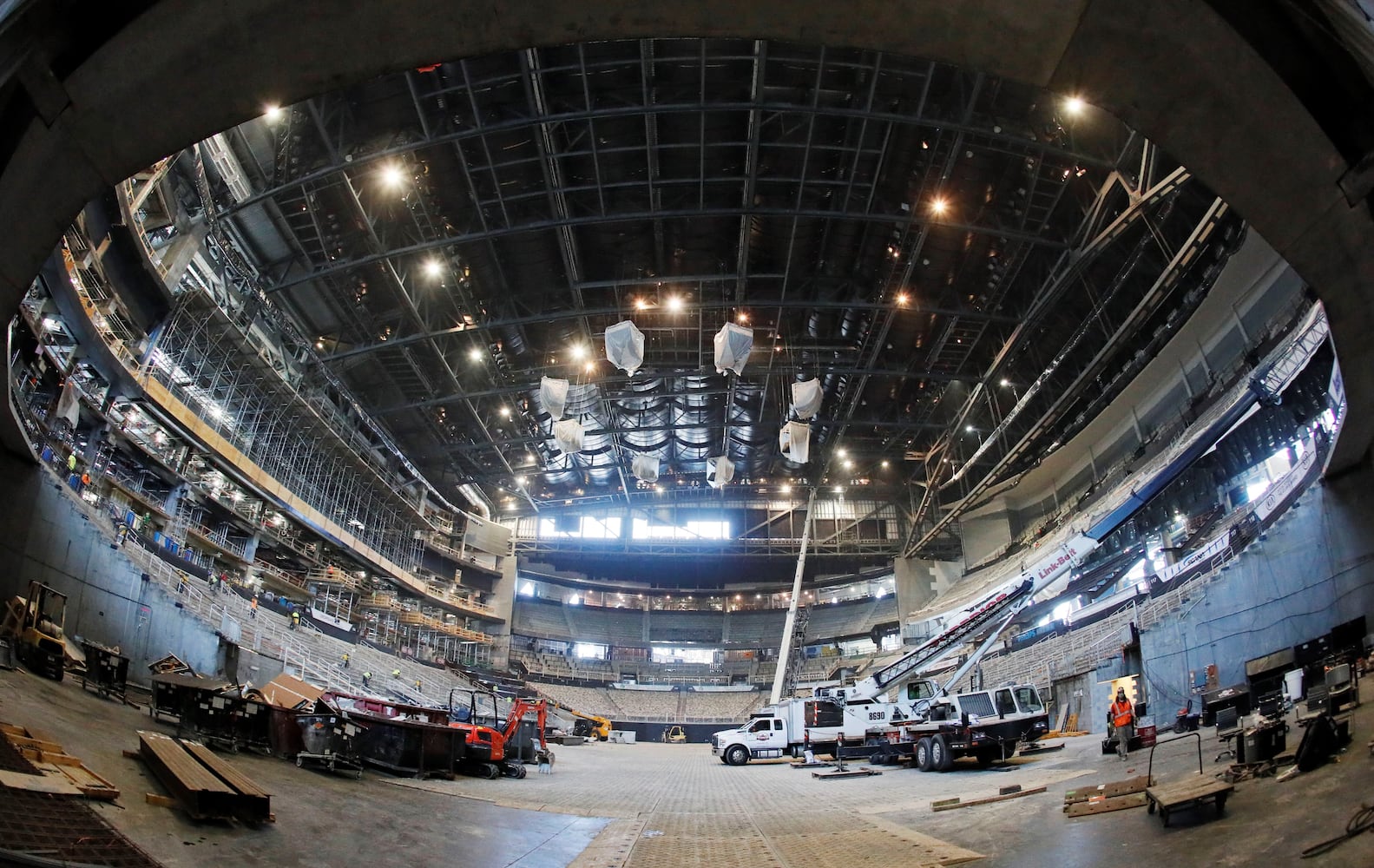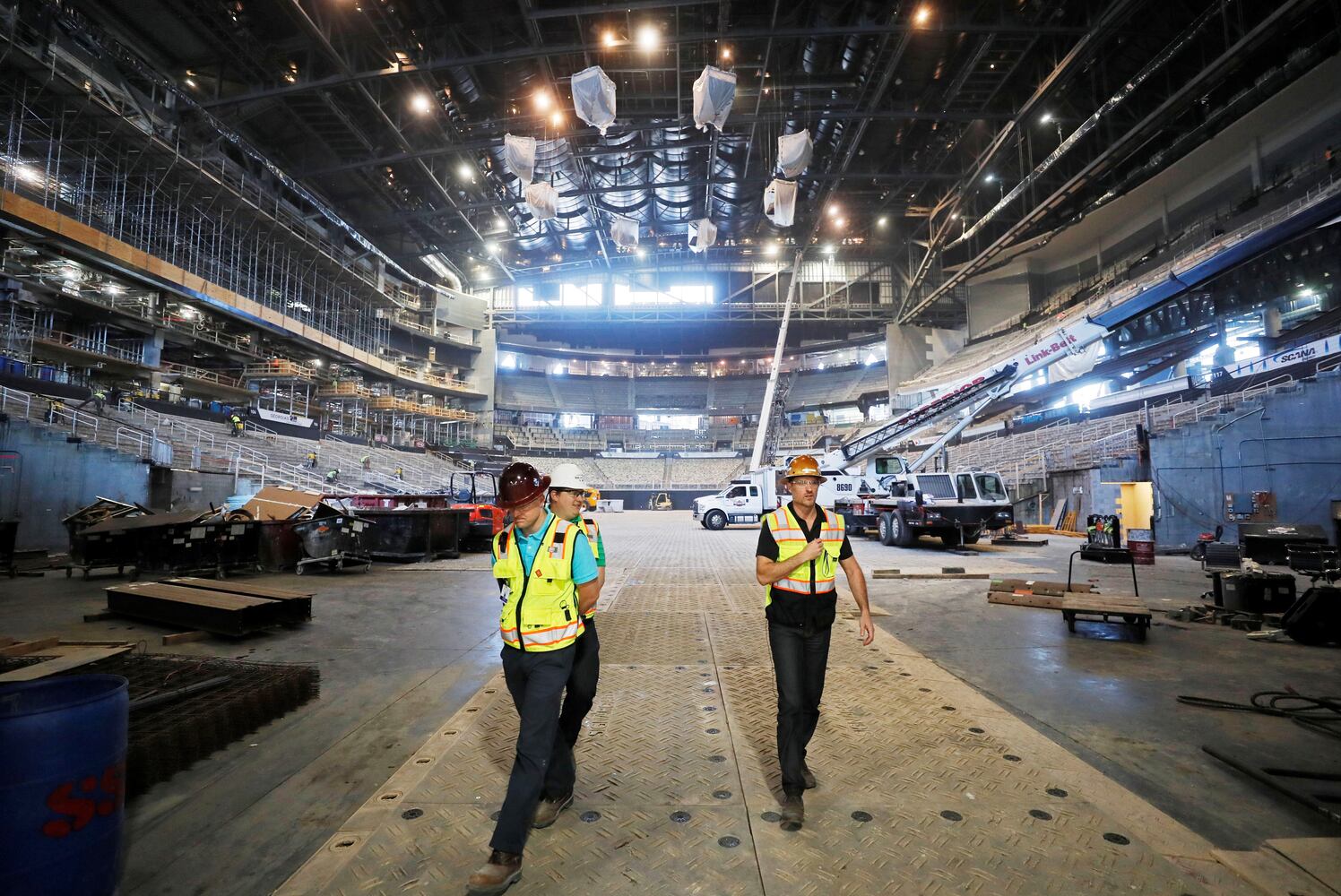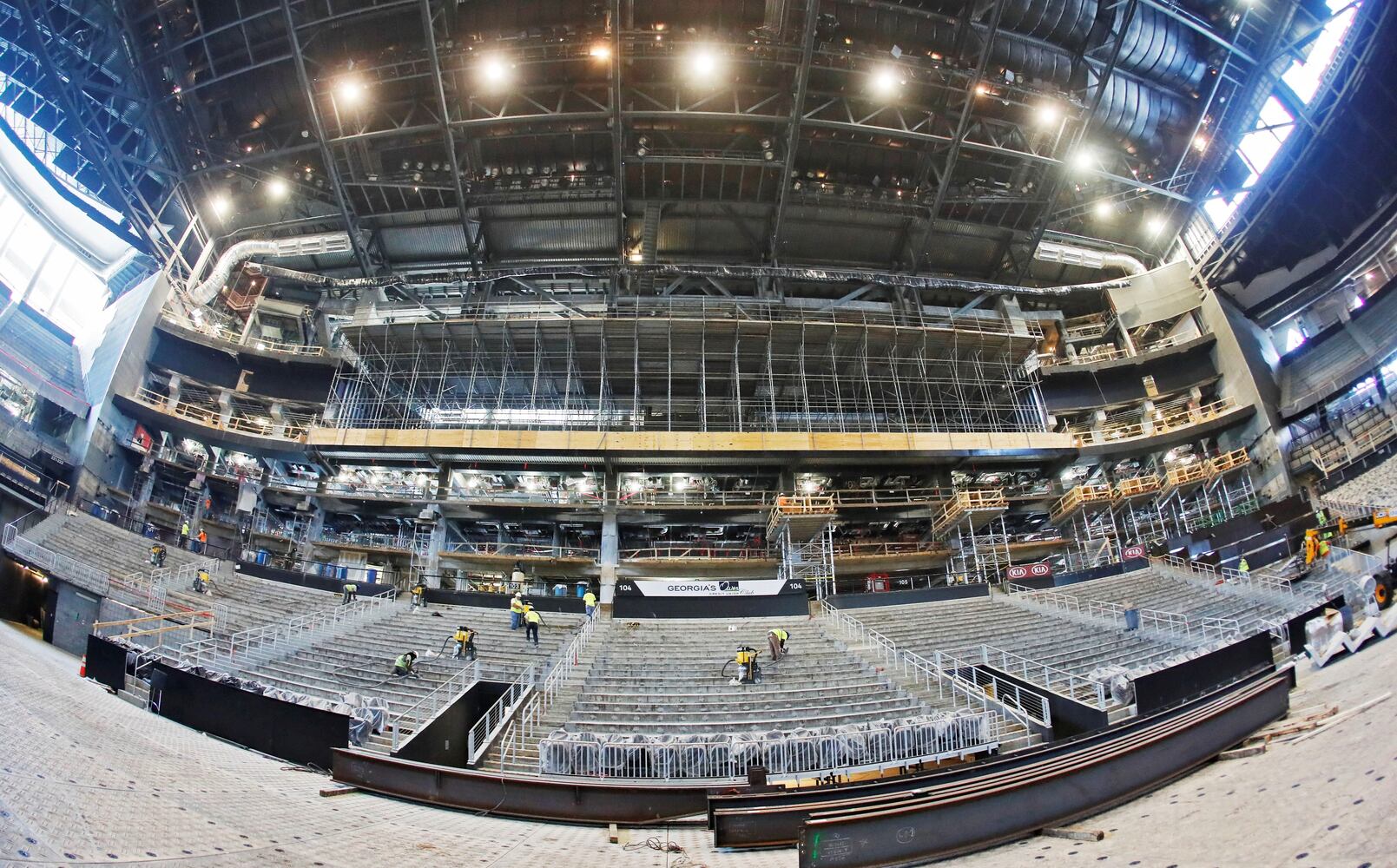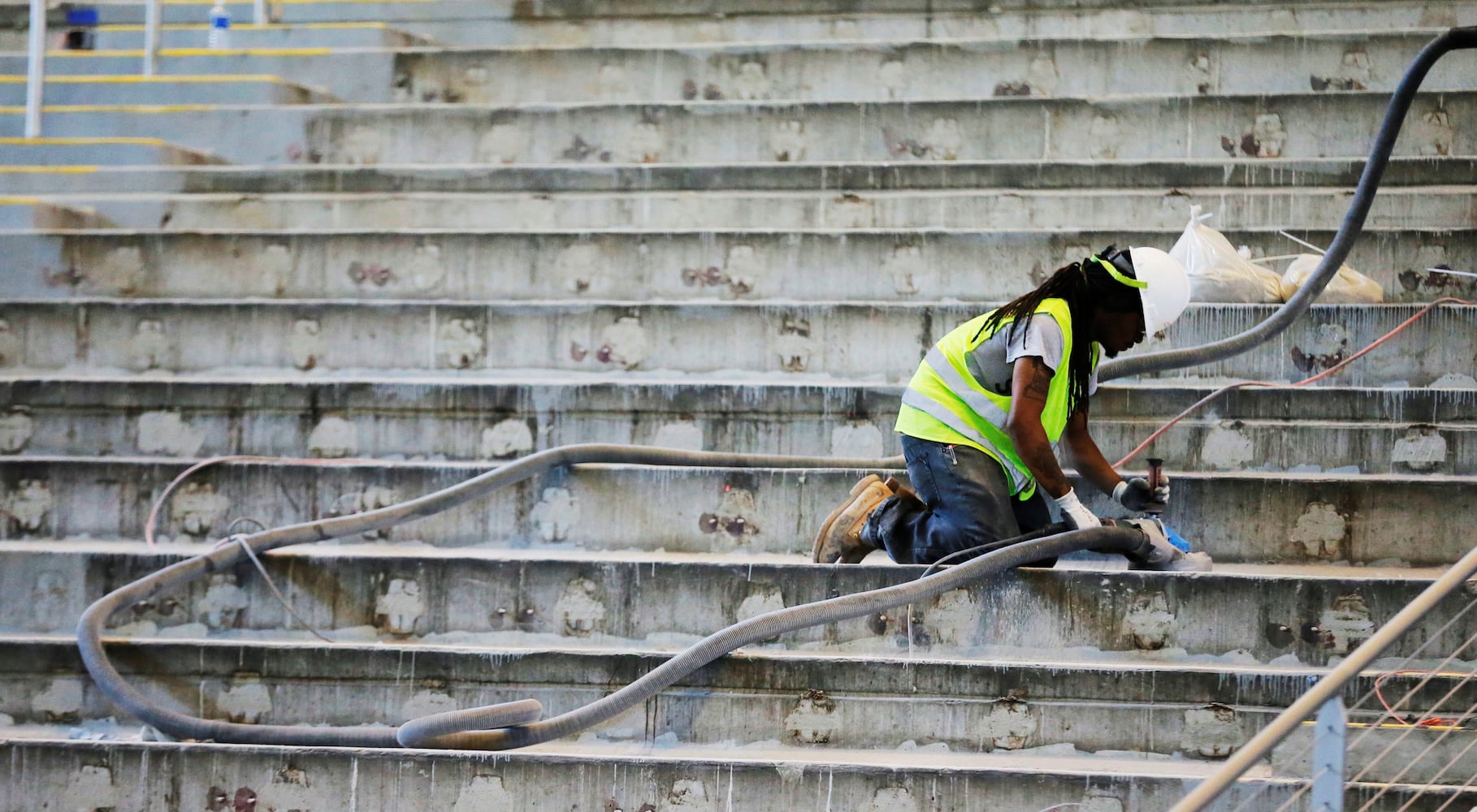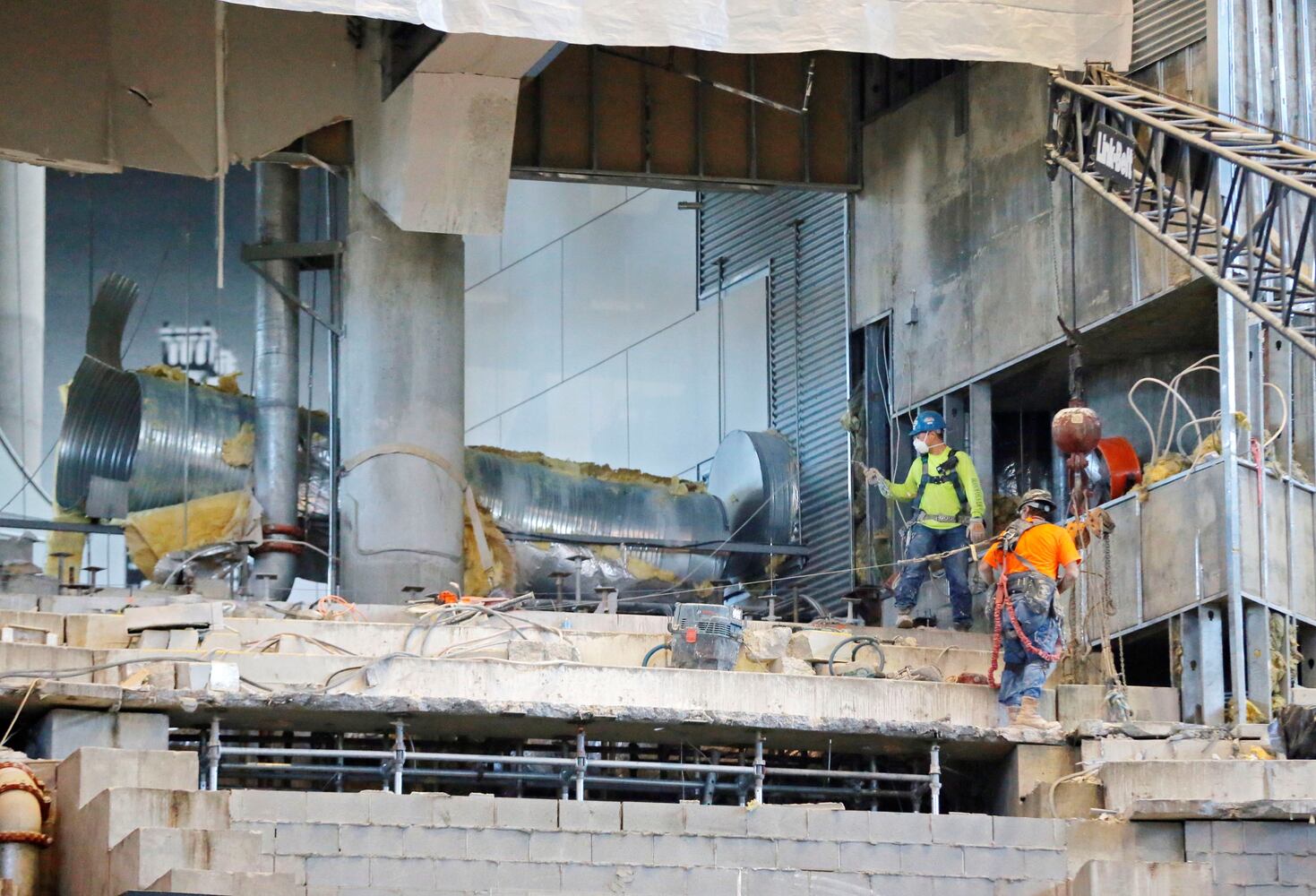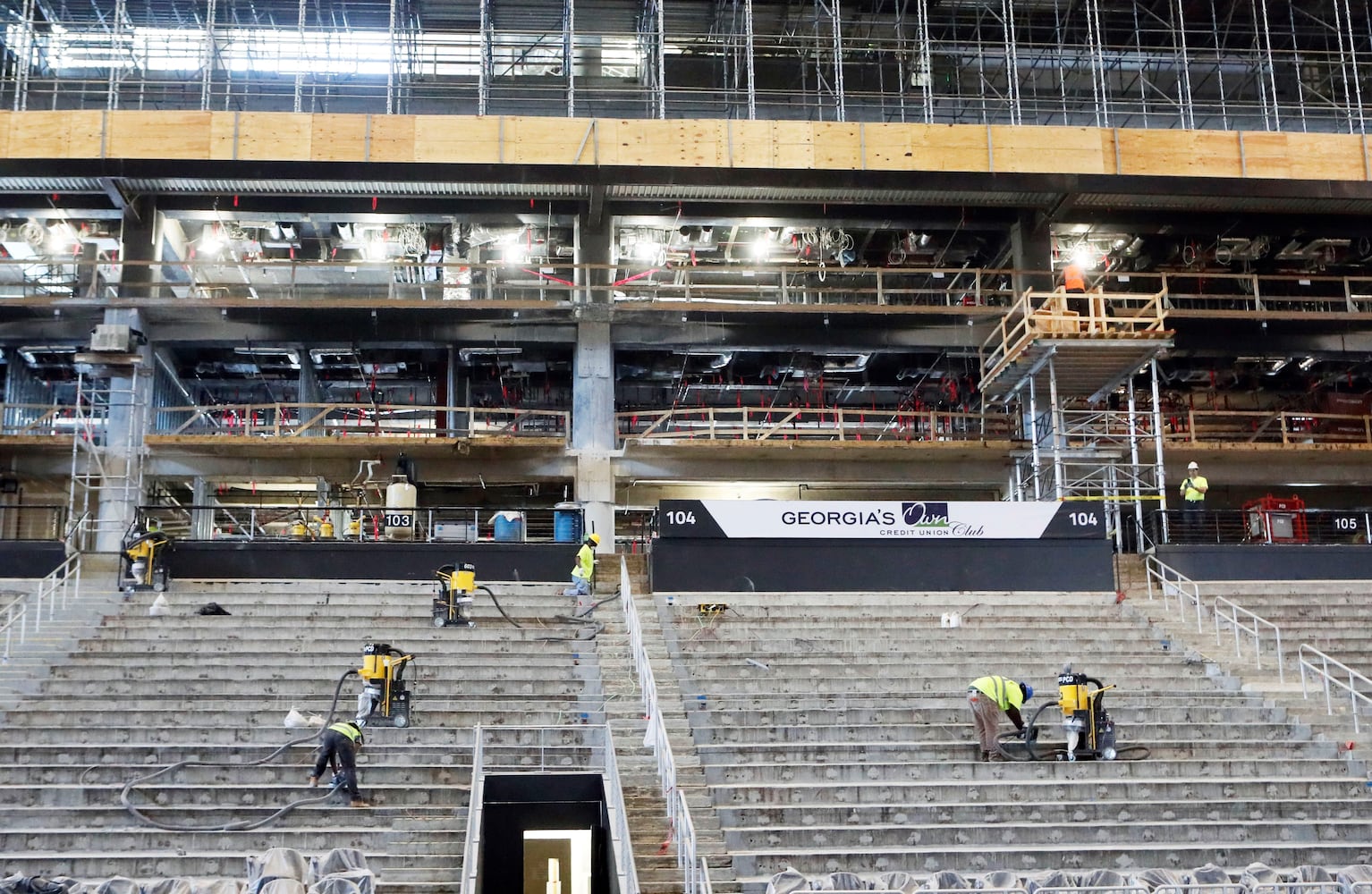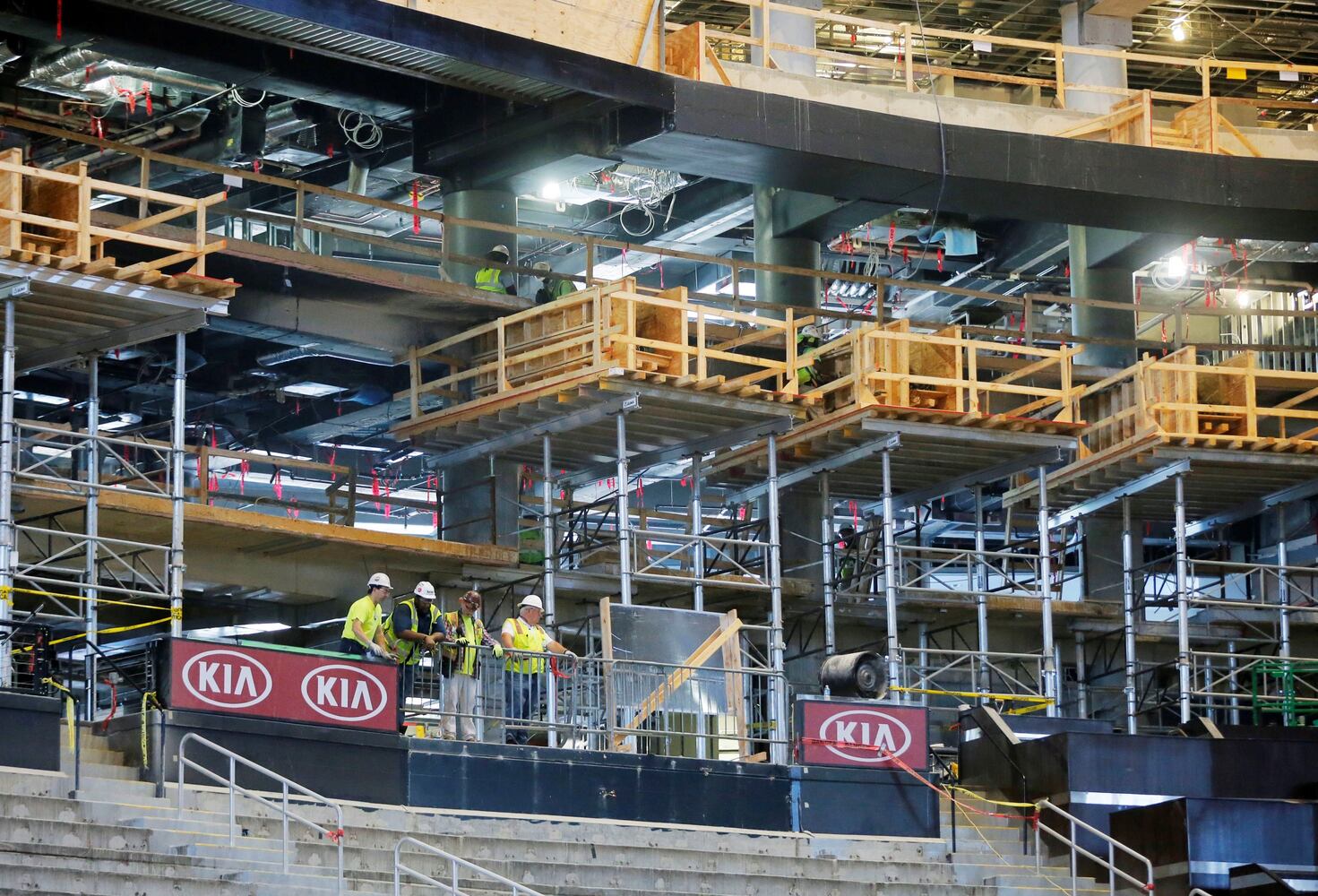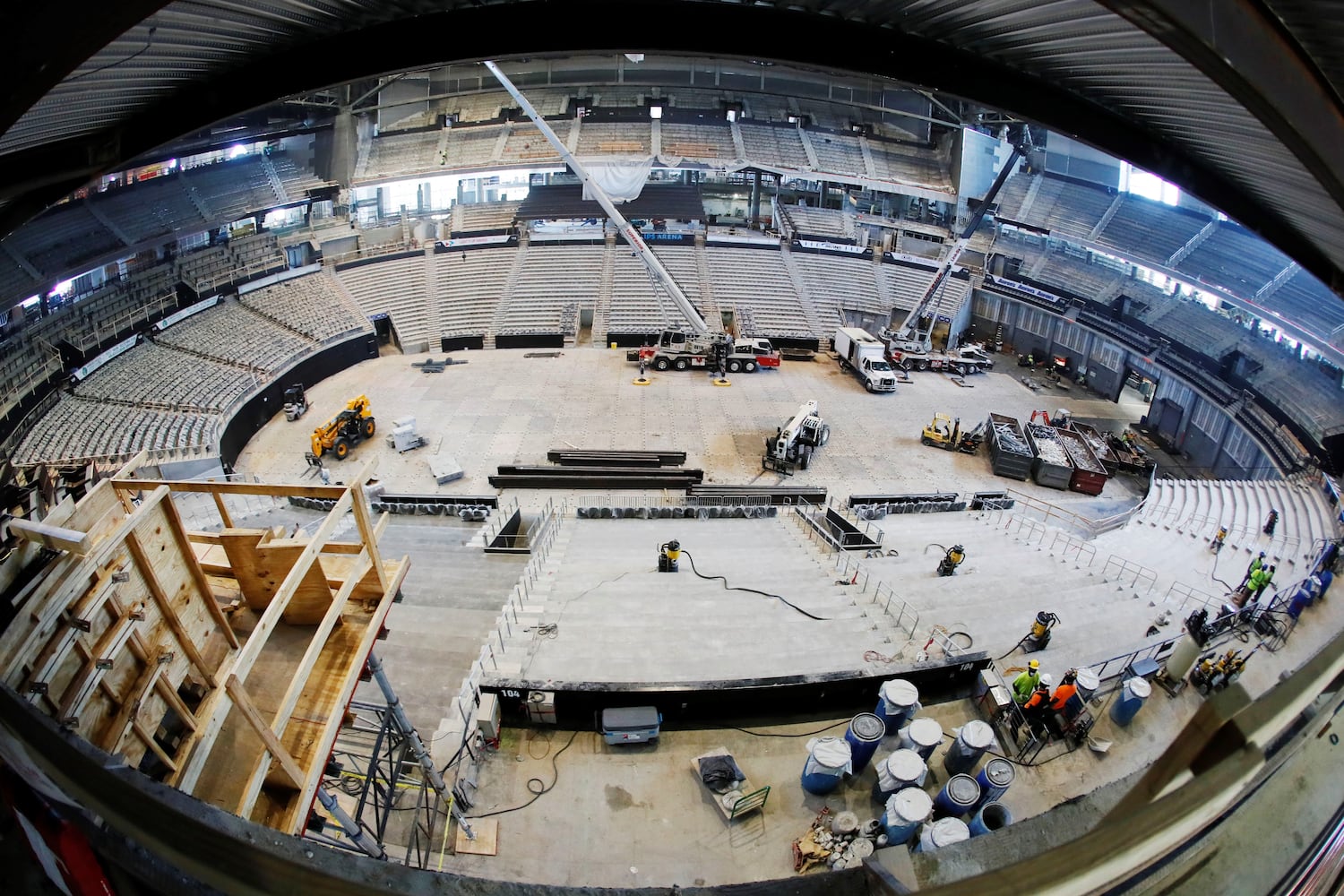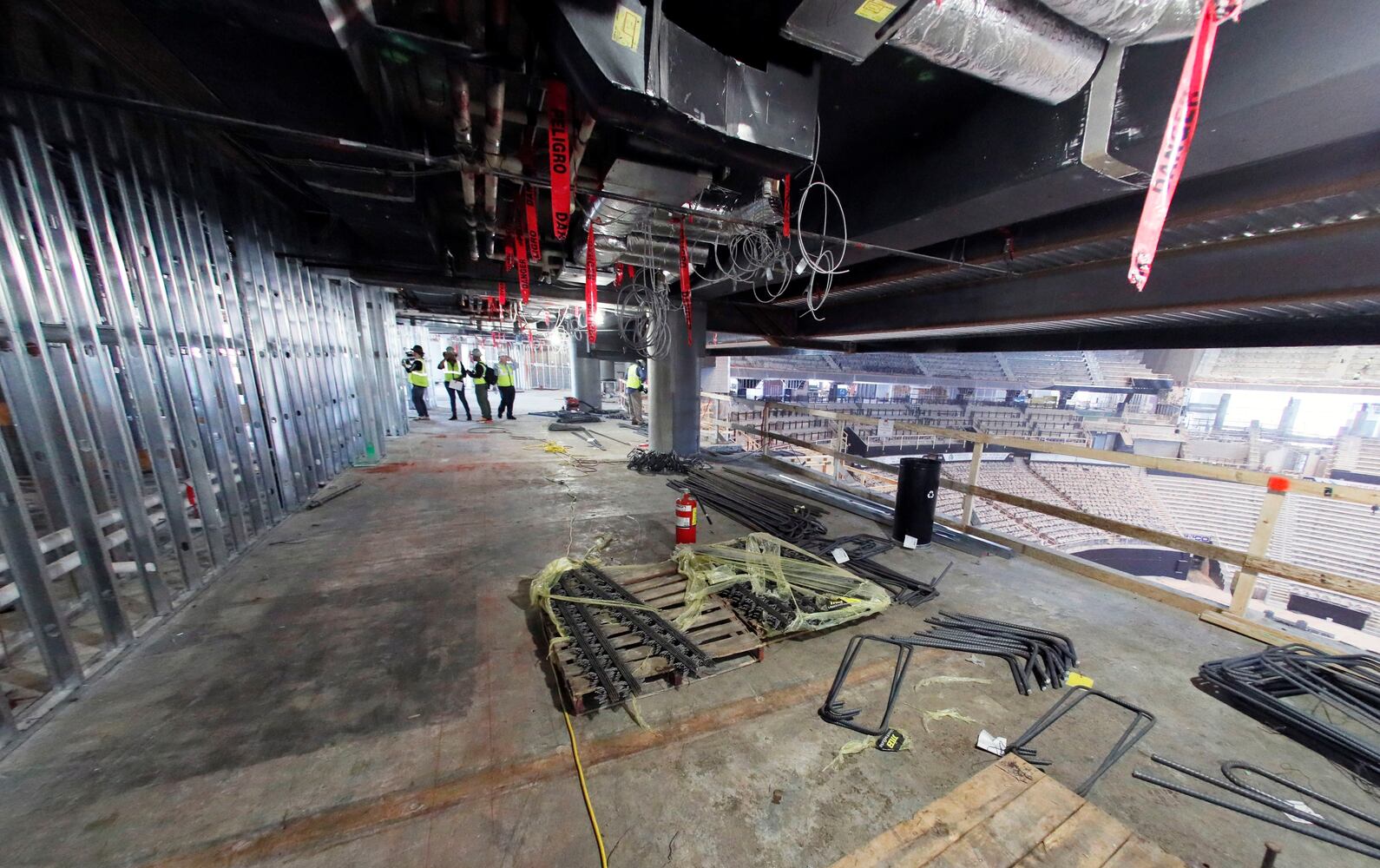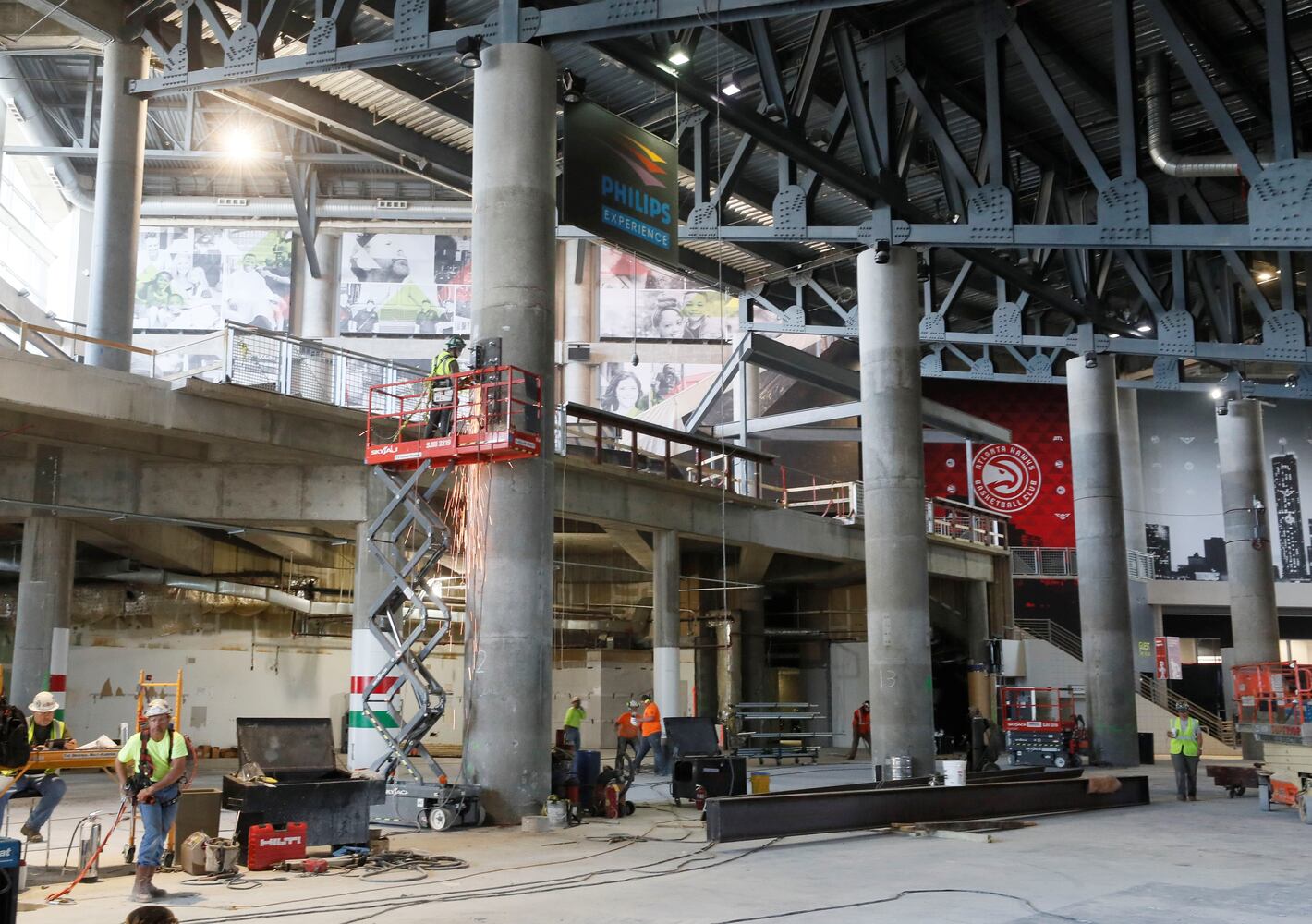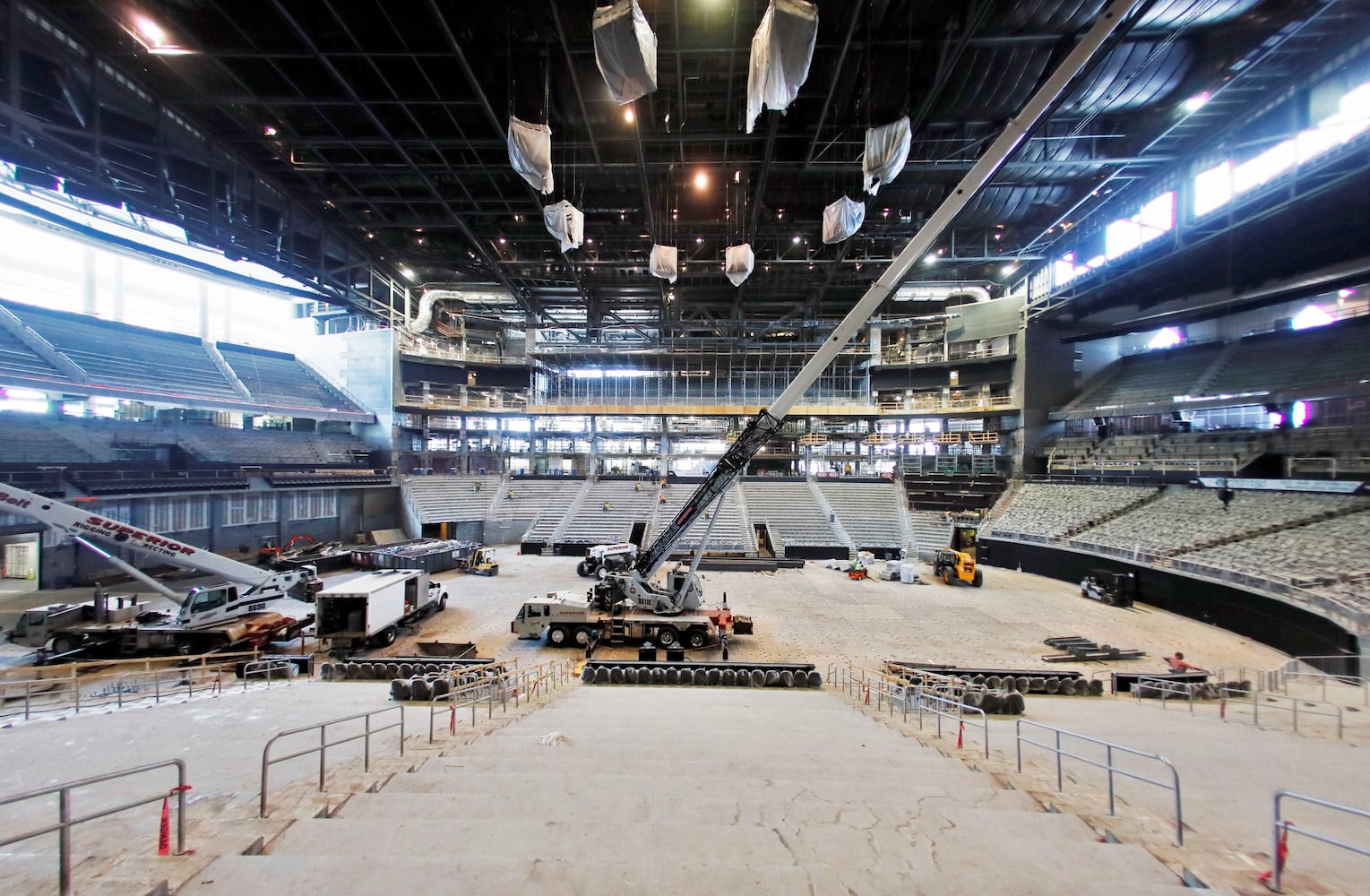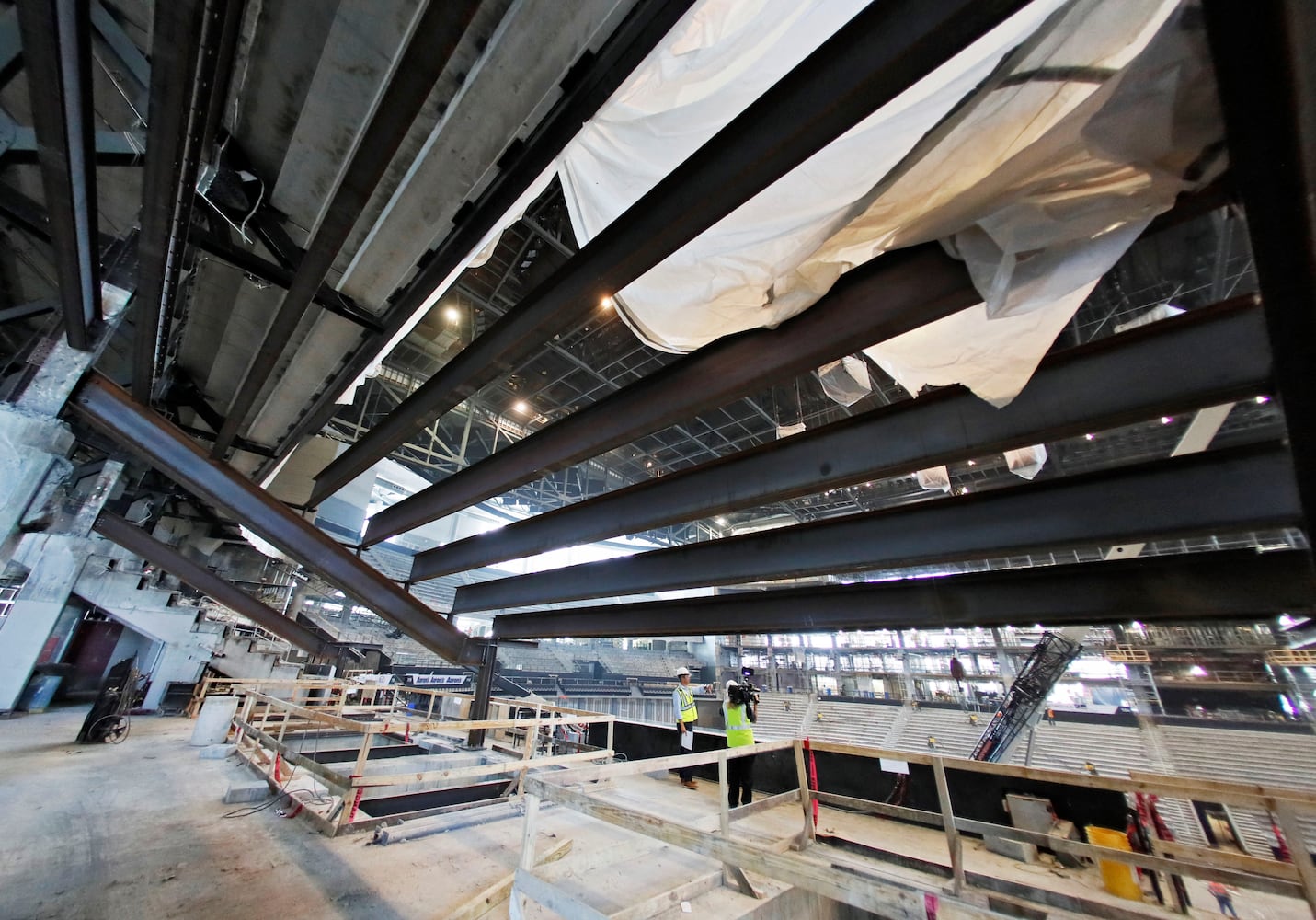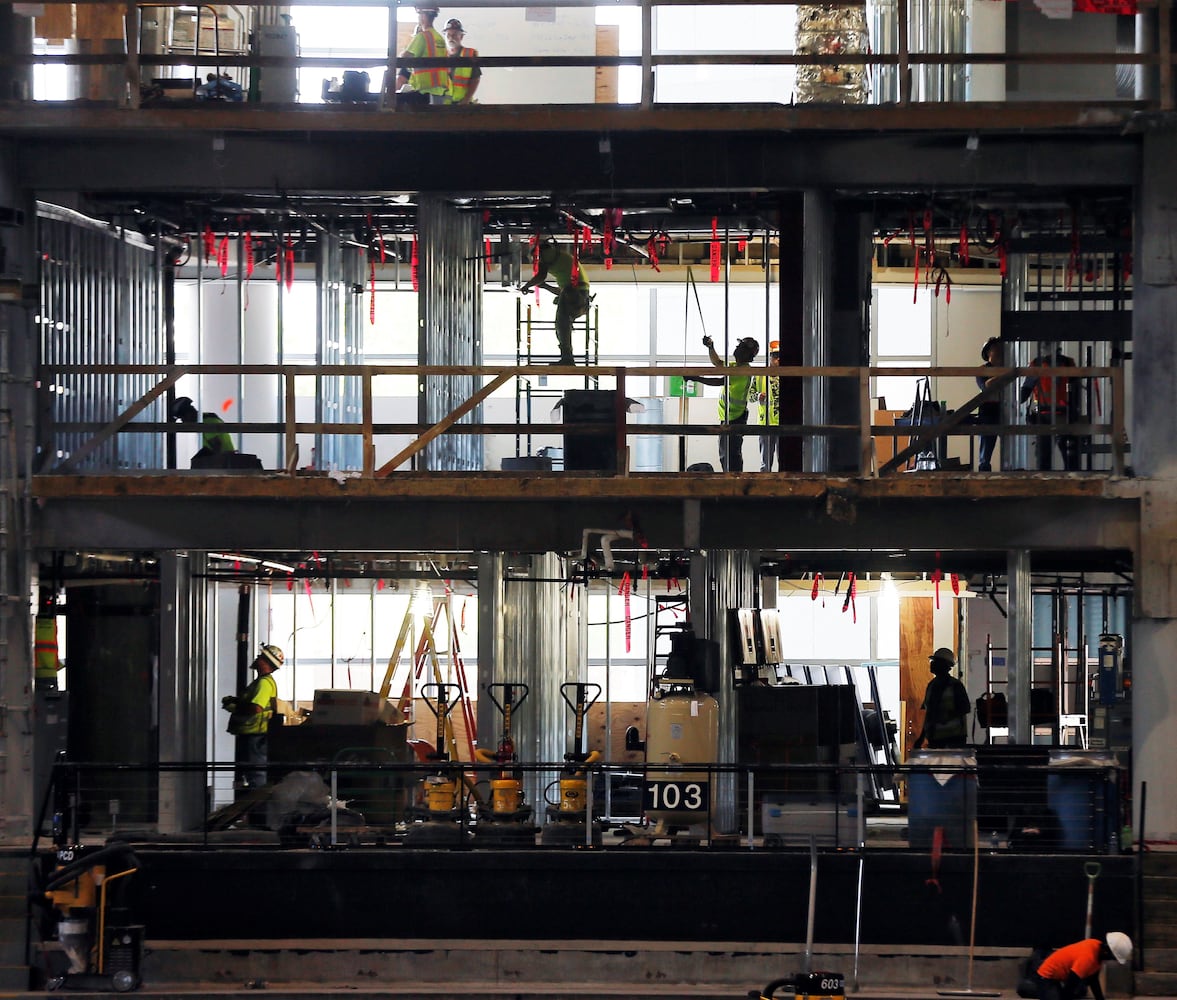The Hawks have long said the Philips Arena renovation would be a roofline-to-baseline transformation, and it became clear during a media tour of the building Thursday how literally they mean that.
A 90-minute walk-through revealed a thoroughly gutted interior of the arena. Seats have been removed, suites demolished, walls knocked down, concourses and seating sections reconfigured. The hard-hat tour stretched from top to bottom of the deconstructed arena, showing not one piece of untouched space and not one piece of finished space.
“It’s a gut rehab,” Hawks chief operating officer Thad Sheely said as sparks flew nearby from welders at work.
> Photos: A look at the extent of work on the arena
From the look of Philips Arena now, it is almost hard to believe an NBA game was played there less than two months ago – and will be again in about 4½ months.
The arena has been closed since April 22 for the last and largest phase of its $192.5 million makeover, which is scheduled to deliver a re-imagined building by the start of the Hawks season in October.
Although the official reopening date won’t be known until the NBA announces its 2018-19 schedule in August, Sheely said contractors are due to turn the building back over to the Hawks organization Oct. 15.
“It’s a very doable deadline,” he said, adding that the work, although “a lot to do in a short amount of time,” is on schedule.
The work began with Phase 1 last summer: the demolition of the wall of suites on the west side of the arena and the construction of the Courtside Club behind one basket. Phase 2 proceeded behind the scenes during the Hawks’ 2017-18 season. And Phase 3, involving about $100 million worth of work, is now in its second month.
Much of May was devoted to demolition, while steel work is this month’s focus, Sheely said. From roughly mid-July until mid-October, the finishes will go in, he said.
Brett Stefansson, Philips Arena’s general manager, said an average of about 450 construction workers are on the job each day this month. Crews are working seven days a week and two 10-hour shifts per day, he said. By September, the number of workers on site daily will grow to 800.
Sheely said the only part of the project completed at this point is the Courtside Club, the new premium space that opened last year. (That club wasn’t part of Thursday’s tour.) Otherwise, every area is a work in progress.
Some 12,500 seats have been removed and recycled. Only the relatively small number of seats that were new last season remain in place, hidden for now under protective coverings.
When finished, the arena will feature more openness, more video (including a center-hung scoreboard three times the size of its predecessor), a wide range of new premium seating areas, a reduced number of suites, several new clubs (one with a view of postgame news conferences), a 360-degree concourse, even a barber shop.
The former six-level wall of suites is being replaced with two levels of suites, Topgolf simulators and new upper-deck seating. On the east side of the building, the 200 level is being reinvented as a premium seating area called Atlanta Social, which will be outfitted with cabanas, banquettes and couches.
The Hawks plan to have all of the arena open for the 2018-19 season except for one premium area called the Legends Club, which will debut a year later behind one of the baskets.
All of the construction work is being done within Philips’ original footprint and under the same roof, and the seating capacity won’t increase. In fact, it’ll decrease to about 17,500, down from 18,047 before renovations began.
But about 100,000 square feet of space not previously accessible to the public is being transformed into “fan space,” Stefansson said. For example, former office and storage space is being converted into a club under the seats behind the players’ bench.
Hawks officials expect the magnitude of the makeover to surprise people when the arena reopens.
“There’s no way people can understand it without actually seeing it,” Sheely said at the end of Thursday’s tour.
About the Author
Keep Reading
The Latest
Featured
